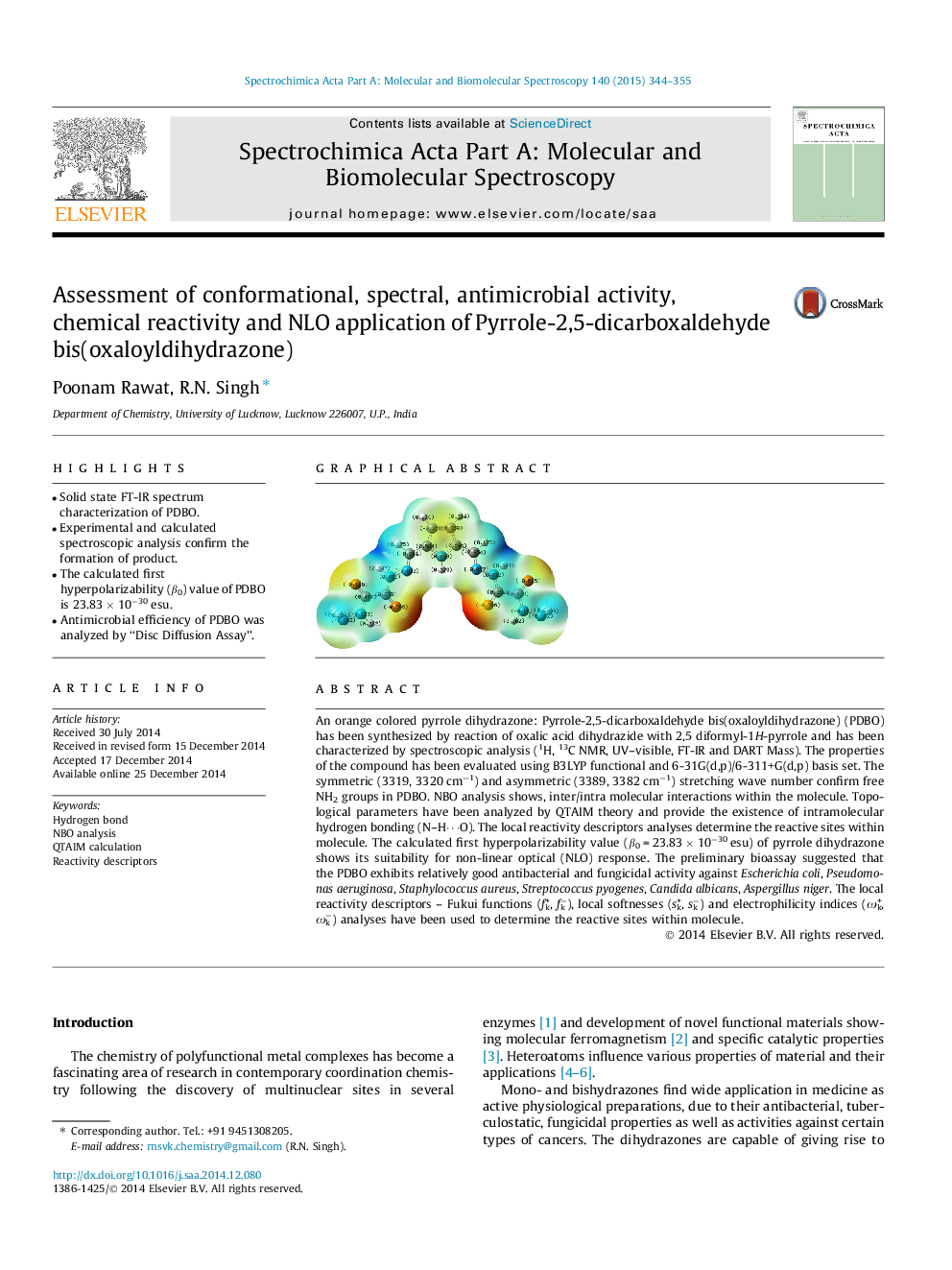| Article ID | Journal | Published Year | Pages | File Type |
|---|---|---|---|---|
| 1229388 | Spectrochimica Acta Part A: Molecular and Biomolecular Spectroscopy | 2015 | 12 Pages |
•Solid state FT-IR spectrum characterization of PDBO.•Experimental and calculated spectroscopic analysis confirm the formation of product.•The calculated first hyperpolarizability (β0) value of PDBO is 23.83 × 10−30 esu.•Antimicrobial efficiency of PDBO was analyzed by “Disc Diffusion Assay”.
An orange colored pyrrole dihydrazone: Pyrrole-2,5-dicarboxaldehyde bis(oxaloyldihydrazone) (PDBO) has been synthesized by reaction of oxalic acid dihydrazide with 2,5 diformyl-1H-pyrrole and has been characterized by spectroscopic analysis (1H, 13C NMR, UV–visible, FT-IR and DART Mass). The properties of the compound has been evaluated using B3LYP functional and 6-31G(d,p)/6-311+G(d,p) basis set. The symmetric (3319, 3320 cm−1) and asymmetric (3389, 3382 cm−1) stretching wave number confirm free NH2 groups in PDBO. NBO analysis shows, inter/intra molecular interactions within the molecule. Topological parameters have been analyzed by QTAIM theory and provide the existence of intramolecular hydrogen bonding (N–H⋯O). The local reactivity descriptors analyses determine the reactive sites within molecule. The calculated first hyperpolarizability value (β0 = 23.83 × 10−30 esu) of pyrrole dihydrazone shows its suitability for non-linear optical (NLO) response. The preliminary bioassay suggested that the PDBO exhibits relatively good antibacterial and fungicidal activity against Escherichia coli, Pseudomonas aeruginosa, Staphylococcus aureus, Streptococcus pyogenes, Candida albicans, Aspergillus niger. The local reactivity descriptors – Fukui functions (fk+, fk−), local softnesses (sk+, sk−) and electrophilicity indices (ωk+, ωk−) analyses have been used to determine the reactive sites within molecule.
Graphical abstractFigure optionsDownload full-size imageDownload as PowerPoint slide
